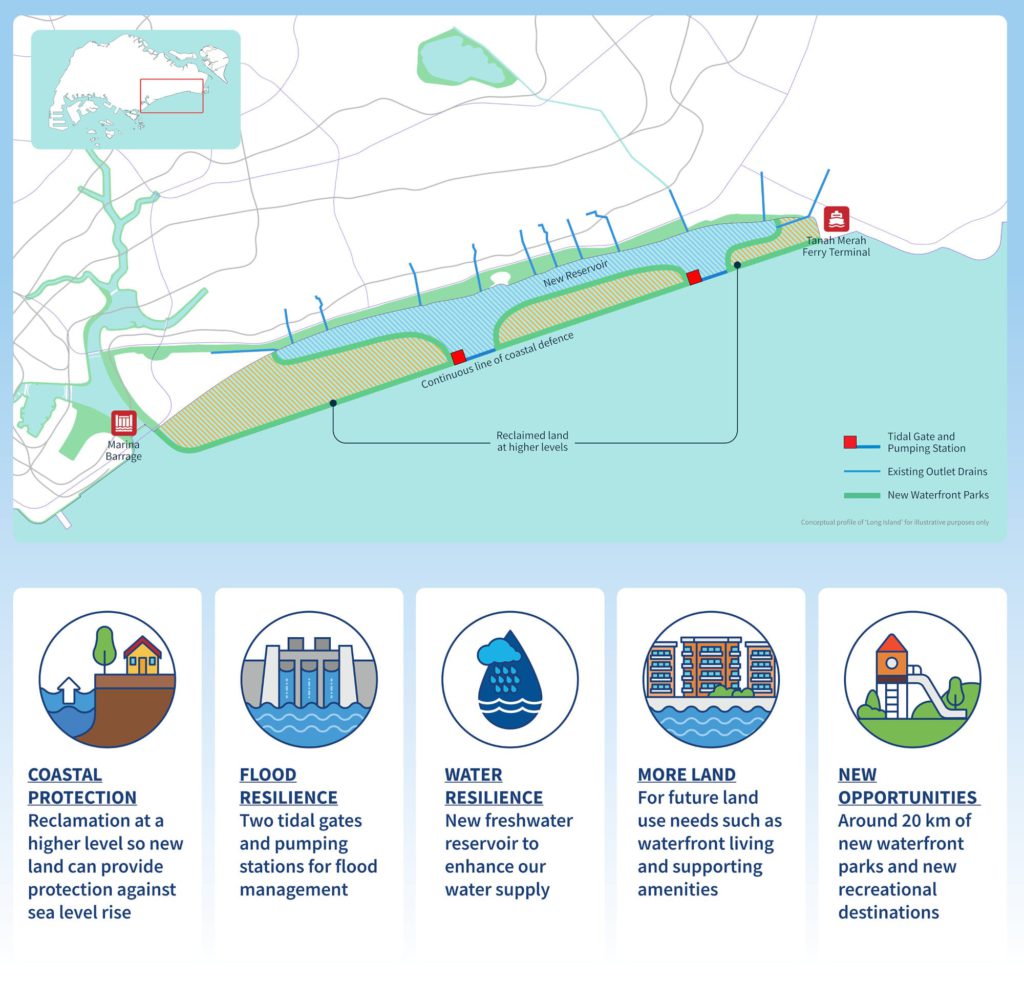This story originally appeared in Open Source, our weekly newsletter on emerging technology. To get stories like this in your inbox first, subscribe here.
Coastal communities worldwide are grappling with one of the most conspicuous symptoms of climate change: rising sea levels. To combat flooding and protect their infrastructure, cities are increasingly expanding into surrounding waters, replacing natural habitats like salt marshes, beaches, mudflats, rocky shores, and associated marine life with structures such as seawalls, pilings, pontoons, and marinas.
This approach is notably prevalent in countries like Singapore, situated in Southeast Asia, where lowlands and extensive coastlines expose them to elevated risks from rising sea levels. Around 70% of Singapore’s natural coastlines have already been transformed into hard coastal structures, such as seawalls and rock slopes, to mitigate these risks, and this is expected to escalate in the coming years.
For example, technical studies have recently commenced for a long-term project that would potentially see Singapore reclaim approximately 800 hectares of land along Singapore’s southeastern coastline. Dubbed the “Long Island” project, this reclaimed island—presumably named after the island in New York—would serve as an enclosed reservoir, offering coastal protection while offering opportunities for waterfront living and jobs.

With decades of reclamation works having previously impacted marine life along Singapore’s coasts, there has understandably been concerns regarding the project since it was first publicly disclosed. The majority of these concerns are driven at seeking assurances that any further reclamation would not significantly affect marine habitats along the country’s coastlines, such as coral reefs.
In this regard, Singapore might consider looking to Australia for a potential solution, specifically, Living Seawalls—an initiative launched in Sydney in 2018.
Living Seawalls is an eco-engineering outfit that utilizes 3D printing techniques to construct hexagonal concrete panels, mimicking the texture and porousness of coral. These modular panels can be assembled like a mosaic, covering larger surfaces or retrofitted onto existing coastal structures.
Once in place, these panels help contribute to ecosystem rehabilitation by attracting fish, algae, invertebrates, and marine plants back to the area. This approach not only mitigates the environmental impact of coastal infrastructure but can also enhance water quality by hosting filter feeders like barnacles. Some of these organisms may also potentially serve as food sources for larger organisms in shoreline ecosystems.
It’s worth noting that traditional seawalls, which are typically flat in structure, do support some forms of marine life, albeit less effectively. In comparison, living seawalls (the panels), with their textured structure, can support a greater diversity of marine life. According to research conducted by Living Seawalls in Sydney Harbour over the span of two years, it was found that its panels can host at least 36% more species than plain seawalls, with up to 85 species found to be living and thriving on the installed panels.

Living Seawalls has already implemented its solution in various parts of the world, including in Wales, Gibraltar, Singapore, and Australia, suggesting early success. Similar developments are also beginning to unfold. For instance, scientists from the Experimental Marine Ecology Lab at the National University of Singapore have reportedly developed their own version, using concrete tiles shaped based on the attachment surface to emulate natural marine habitats and enhance biodiversity.
With the effects of climate change showing no signs of abating, what Living Seawalls has hitherto developed could evolve to become an appealing solution, especially for cities vulnerable to rising sea levels while striving to conserve and restore biodiversity. More importantly, Living Seawalls has illustrated the feasibility of crafting contemporary solutions capable of effectively addressing the impacts of the climate crisis without compromising nature.
If you enjoyed reading this, you might also be interested in:
- Crossing the line: Earth’s planetary boundaries have been destabilized by oil, gas, and coal (by Mongabay)
- Climate technology for a more sustainable Southeast Asia (by Deloitte Southeast Asia Innovation Team)
- Investments pour into Southeast Asia’s climate tech solutions as temperatures rise (by Khamila Mulia)
